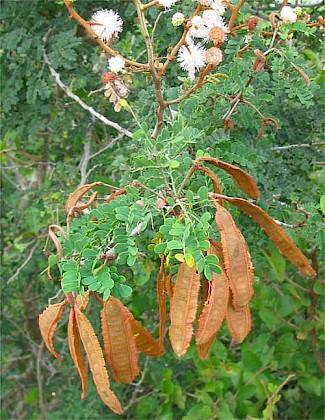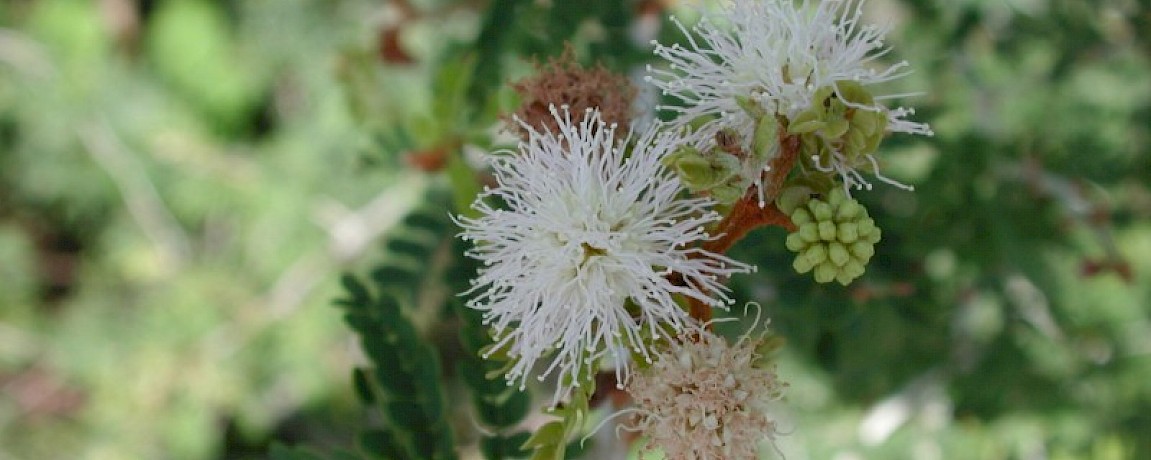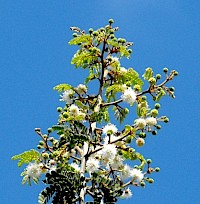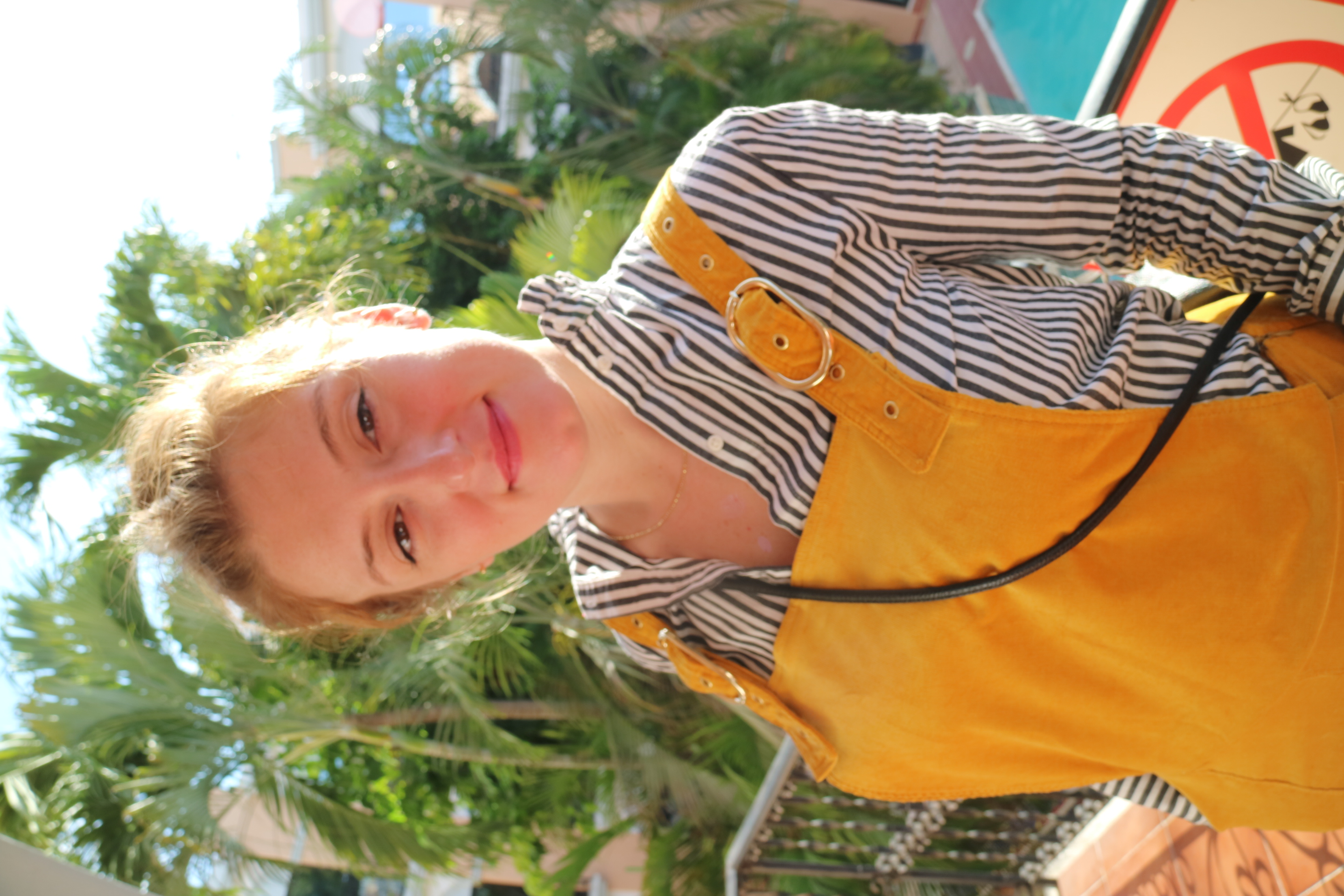Trees of the Yucatan: Mimosa
The scrub surrounding Sabacché, is dominated by woody, frilly-leafed, often spiny members of the Bean Family. By "frilly-leafed I mean that the leaf blades are once- or twice-pinnately compound -- compound leaves composed of numerous smaller leaflets. In the heart of the rainy season our most conspicuously flowering of the group is MIMOSA BAHAMENSIS. Local people call it Catzin, but that's what they also call a common acacia with enormous, thick-based spines -- one of the Bull-horn Acacias -- so it can be called Sak-Catzin. "Sak" means white, and probably refers to the abundant white flower heads.
In the heart of the rainy season our most conspicuously flowering of the group is MIMOSA BAHAMENSIS. Local people call it Catzin, but that's what they also call a common acacia with enormous, thick-based spines -- one of the Bull-horn Acacias -- so it can be called Sak-Catzin. "Sak" means white, and probably refers to the abundant white flower heads.
Sak-Catzin is a small tree very common along roadsides and recently abandoned fields. In other words, despite being woody, it's almost weedy. It seldom grows more than 15 feet tall. You can see its flowers and fruits at left.
Though several members of the group produce fuzzy-looking, spherical flower-heads, this species' flat legumes are fairly distinctive with their brownish, papery, jagged wings along both sides of the flat pods' faces.
According to Jim Conrad, the local people "more or less ignore this plant, it being too small to produce firewood, and not known as being particularly medicinal, though some say somewhat vaguely that it has been used for baby medicine." Its abundant flowers do feed untold numbers of nectar and pollen-seeking invertebrates, which in turn feed birds, which perform many services in the scrub, so mimosa bahamensis is a good forest citizen.
Our friend Jerry Britner, advisor to a local neem and moringa farm, thinks there might be more to this species, and shared his thoughts on it during our last visit. He refers to the plant by a different name: washeen.
"Washeen is the local species of mimosa," he says and compares it to a species in Georgia, whose flowers are silky pink. The local variety's blossoms are white. "You can harvest the leaves every month. It’s everywhere," Britner continues. He says the pigs and cows love to eat the leaves and he's even seen a giraffe in the Merida zoo leaning out of its enclosure to munch on some.
"It’s a weed, but it's 27% protein," he claims. We don't plan on holding him to that number, but would love to investigate. "The university here has started doing some research on it," he continues. We'll follow up and let you know.
"Washeen thrives in the dry season," he says and points out that the region's thin topsoil is an advantage for these plants, which have adapted to survive on limited water and nutrients. "Plus, the washeen--the mimosa--is nitrofixing in the soil, so it actually supports our other crops, like (sugar) canes and grasses."
Finally, he mentioned that locals are rumored to use the tree for some form of water purification; either planting them around water sources or soaking the branches in questionable sources. Another interesting claim that we'll need to investigate...
The Yucatan is full of fascinating species with rich cultural backgrounds and undiscovered potential. This article relies heavily on research provided by Jim Conrad. Please check out the link to one of his books below--he has written several--and check back soon for more information. Please leave a comment if you have something to share about Mimosa Bahamensis and...
Thanks for Reading!








Comments
Andrea Schuman 8 years ago
uashim (washim, as you write it,also correctly) is actually not a mimosa. Its scientific name is Leucaena leucocephala, and it was formerly mis classified as mimosa glauca. It's correct name is Acacia frondosa, and it is indeed a rich forage plant, but is also considered one of the 100 most invasive plants in the world. Mimosa bahamensis, the plant you write about, is not a forage plant, and although the two look quite alike, the mimosa has sturdy spines and is more scrub than tree.
Just sayin'....
Reply
(0 to 1 comments)